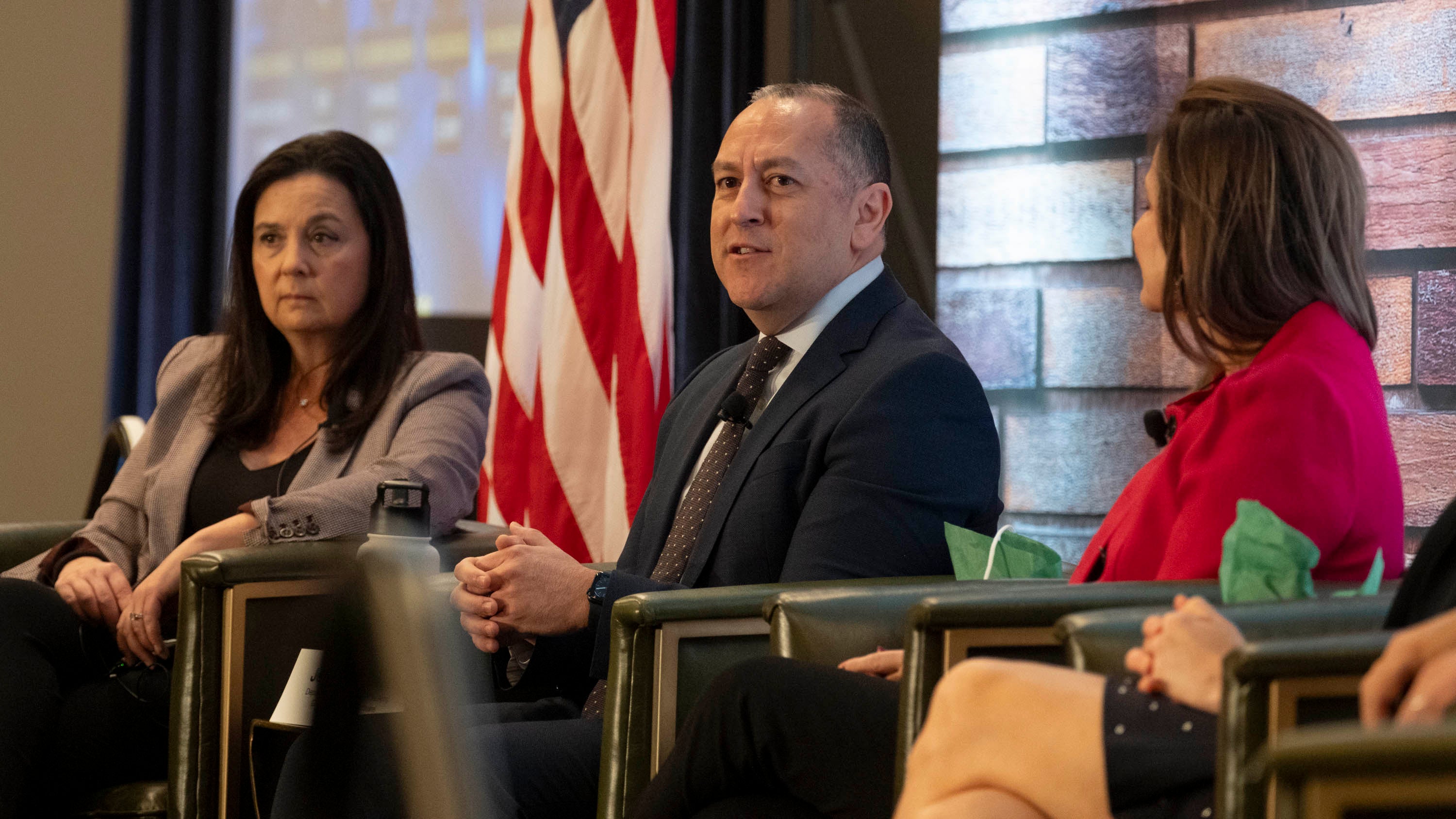Army Wants to ‘Reshape’ Software Acquisition
Army Wants to ‘Reshape’ Software Acquisition

As the Army faces pressure to adopt the technologies and digital tools rapidly becoming the standard for business and professional operations, service leaders plan to roll out a slate of new development and acquisition policies aimed at standardizing best practices and taking advantage of outside expertise and already validated efforts.
But even with these initiatives in motion, the Army may not be moving fast enough to satisfy the industry partners supporting its work.
Army Undersecretary Gabe Camarillo, who headlined an Oct. 10 panel about digital transformation at the Association of the U.S. Army’s 2023 Annual Meeting and Exposition in Washington, D.C., hailed the work done in the past two years to emphasize simple and standardized initial capabilities documents, or ICDs, over more elaborate, bespoke and descriptive needs statements that can slow acquisition and development. Enabled by expanded authorities from Congress that allow for streamlined acquisition, this ICD-based approach is now in use by 11 Army programs, Camarillo said.
“We are always looking for the best of breed, so how do we adapt our essential processes to do that is something we’ve begun to do in a fundamental way," he said. “But there’s more to be done.”
To that end, he said, the coming rollout of new policies “will fundamentally reshape the landscape” for how the Army manages and maintains software.
These include changing the software test and evaluation process to acknowledge contractor testing that has already taken place, in order to avoid duplicating efforts; establishing “coherent” contracting approaches that require Army personnel trained in software development and how to define the right requirements; and importing knowledge in the form of a team of outside experts the Army can lean on to review and refine solicitations for complex software development.
“I think industry would very much appreciate that,” Camarillo said. “The reality is, there are way too many programs for contracts that have been led without an understanding of what we're asking for in a real sophisticated way.”
These efforts notwithstanding, another panelist faulted the Army for being too risk-averse when it comes to widespread deployment of systems and technologies.
Karen Dahut, CEO of Google Public Sector, cited artificial intelligence and generative AI in particular as spaces in which a fear of the unknown was pushing the U.S. military to extensive testing and development rather than timely execution. Meanwhile, major corporations are moving forward with their own rollouts, trusting the mechanisms in place to protect data and shield personal information. When a crisis unfolds, like the war in Ukraine, Dahut added, the Defense Department then approaches industry partners demanding urgent delivery of the products and capabilities they've long been deliberating over.
“I think we tend, inside of the department, to think too long and hard about these experimental technologies, and that prevents us from pervasively deploying them and really enabling the warfighter in a different way,” she said.
What’s holding the Army back may come down to simply having the protocols and procedures necessary to sustain the new systems. Lionel Garciga, the Army's chief information officer, said that’s the work that some private sector companies have already accomplished.
“From a technology perspective, we could probably deploy ICAM across the Army today," Garciga said, referring to the service’s future Enterprise Identity, Credential and Access Management system, intended to provide “zero-trust” security and access across the department.
Young Bang, principal deputy assistant secretary of the Army for acquisition, logistics and technology, said the Army should look to the Marine Corps as a leader in developing tactics, techniques and procedures, rather than soliciting more tech to solve problems.
“What does the Army do? We throw more money and more systems at the problem, versus the Marines, … they actually look at TTPs, because they don’t have a lot of money,” Bang said. “If we increase our technical debt, we’re never going to be able to get to our target systems or spend money for that.”
— Hope Hodge Seck for AUSA

